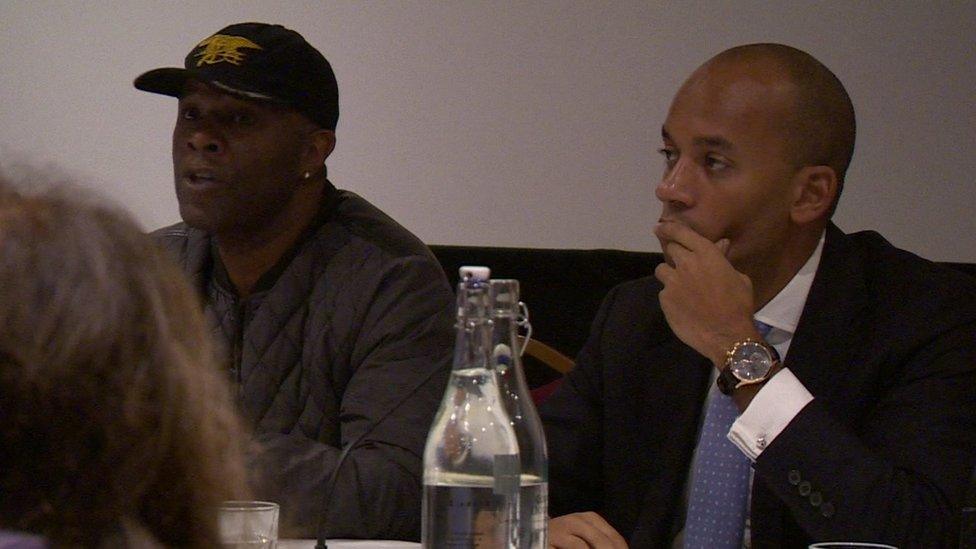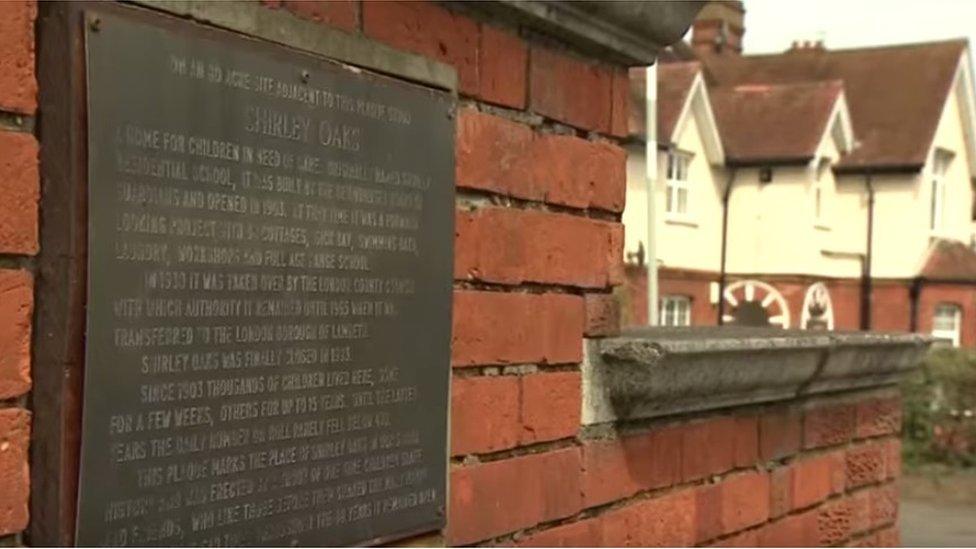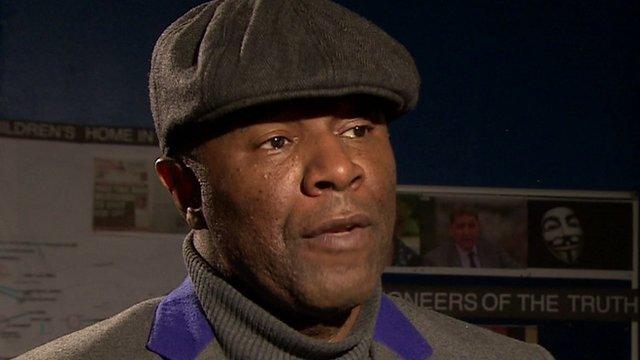Shirley Oaks abuse campaign finds '32 paedophiles'
- Published

Former resident Raymond Stevenson and Labour MP Chuka Umunna
Campaigners on behalf of victims of child sexual abuse at the Shirley Oaks children's homes in south London have said they received allegations that 32 paedophiles were involved.
Three people were convicted of child abuse which took place at the homes in the 1970s and 80s.
Abuse survivors believe there are other offenders who were never prosecuted.
They have compiled testimony which will be handed to the Independent Inquiry into Child Sex Abuse.
Fifty-two houses on the 70-acre Shirley Oaks site, near Croydon, looked after children in care between the ages of eight and 14 from the 1950s to 80s.
The Shirley Oaks Survivors' Association launched a campaign video on Wednesday featuring accounts of adults who were brought up there.

The former Shirley Oaks site in Croydon
Former resident Raymond Stevenson said the video "will enable victims to tell their story through a medium that cannot be tampered with or edited".
The Independent Inquiry into Child Sexual Abuse, chaired by Justice Lowell Goddard, announced in November that child abuse in Lambeth children's homes, including Shirley Oaks, will be among the first investigations it will carry out.
But Labour MP Chuka Umunna, a member of the Home Affairs Committee whose constituency is home to several survivors, called for the government to allocate specific funding for the police to investigate child abuse and for councils to be given money to pay compensation to victims.
Mr Umunna said he was concerned the inquiry could generate up to 30,000 cases, putting pressure on police resources.
Former residents said they were preyed upon, sexually abused and tortured for decades, some committing suicide.
They have called Shirley Oaks the "largest children's home in the world, with the largest paedophile ring".
There have been long-running accusations of a cover-up and survivors recently called for an investigation into a boy's death in 1977 to be reopened.
- Published27 November 2015

- Published27 October 2015

- Published7 August 2015
